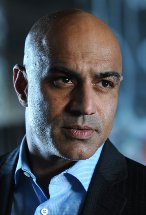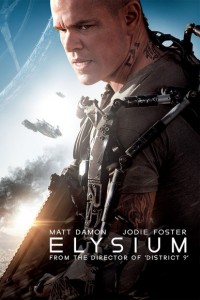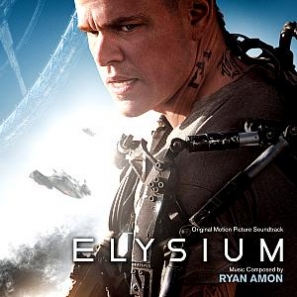Interview: “Elysium” Villain Faran Tahir
Posted on August 9, 2013 at 8:00 am
Faran Tahir comes from a family of actors. He was born in Los Angeles to Pakistani parents and studied theater at UCLA and Harvard. He has appeared in “Star Trek” and “Iron Man” and on the television series “Warehouse 13.” He talked to me about playing a bad guy (who happens to be the President) in today’s release, “Elysium.”
You play the President in this movie! That must be pretty cool.
Not a bad thing to play, right! To be the leader of something. The way I look at any character is, “Can the audience, can I connect to the character?” You always build from that essential connection, making the person as human as you possibly can. When I was living with this character, I didn’t want to put the label of “good,” “bad,” or “evil” on him. I wanted him to be more of a person and let the audience decide where he lies in their minds and in the heart of the story. He is a politician so you needed to see nuance and have an angle of this politicking in dealing with issues. So that’s how I see it.
Whoever the bad guy is, he or she thinks that they’re completely justified in what they’re doing. Their actions might be perceived as bad, but to them, they’re natural. That’s just what they do. The challenge is how to step into those shoes and see the world from that perspective. Your own personal values and inclinations might play a part in it, but you do have to put them on the shelf for a little bit and just see the world from those eyes. That’s the beauty and the challenge of acting and that’s what attracts me — to see the world from someone else’s perspective. You learn a lot, and not just from the bad guy, just to see the world from a whole new set of eyes.
Was there a lot of green screen in this movie? What kind of a challenge does it create for an actor to know that whatever you are interacting with will be added later by a computer?
There was nothing but green screen! It’s very exciting because you don’t know what the final product will look like. So your imagination is working overtime to create all that in front of your eyes as much as they will later. To me, that is a lot of fun. My background is in theater and that extends itself to that kind of acting because on stage you don’t have everything in front of you. If you’re playing in “The Tempest,” you have to create that storm yourself to convey the emotions of the character. It’s when you walk on the set that the green screen is most apparent to you. But when you get into the reality of the character, it doesn’t make any difference. You’re just playing the scene, the emotion of it. A person standing and just watching — it might look very odd. But when you’re in the scene, it’s a non-issue. You are given some idea of how it’s going to look and technically, you are told, “Look over here, look over there, that’s where it’s going to be,” and you take it from there.
 You are working with an exciting and visionary director, Neill Blomkamp.
You are working with an exciting and visionary director, Neill Blomkamp.
Neill is a genius. He has amazing vision, an amazing quality of taking hot-button issues that are current to us right now and setting them in the fictional zone so we all can examine them from all different angles. As a director, you know he knows where he wants you to go, what the vision of the film is, but there’s this amazing laid-back quality and he lets you organically find your character. He gives the trust to his actors that they will get there. He is there to guide you and stay true to his vision, but there’s never any shoving down his version. He lets you find your reality and your truth and for an actor that’s an amazing gift. He has an affinity and a connection to actors that is amazing to watch.
You’ve played a lot of villains. Who are some of your favorite movie villains?
Robert De Niro in “Taxi Driver.” He did some horrific things but there was a connection that you had with this guy, an amazing feat for someone to pull this off. He took you on the journey. You knew he was not a good guy but you trusted being led by him on that journey. That is genius, both De Niro and Scorsese.
What do you want people to talk about on the way home from “Elysium?”
This movie has something for everyone. If you’re looking for science fiction, it’s there. If you’re looking for action, it’s there. But the thing that I want people to be talking about is the way it raises some interesting and important issues and I’m hoping it sparks that conversation. No matter what side of the argument or issue you fall on, it should spark a debate.
What was it like to grow up in a family of performers?
Our dinner time conversations were sometimes about sports and all of that but a lot of time about literature, television, theater and all that. And it got heated. We all had our point of view all points of view were listened to at least. But they also had a very practical, pragmatic approach to the business of performing. There was the other side. When I wanted to become an actor, they did not try to dissuade me but their question was “Why?” They wanted to prepare me for the ups and downs of this life, how to handle success and the failures and disappointments. As a parent, you don’t want your kids to be broken people. There was a nice mix of dealing with the creative side and the practical side. My parents told me to be my own best critic. You will know when you have done a good job, a decent job, or a bad job. Listen to your own inner voice.


